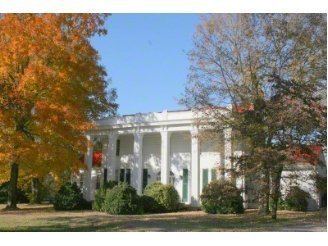Built 1815-1816 Area 5 ha | NRHP Reference # 77001283 Added to NRHP 23 November 1978 | |
 | ||
Location Columbia, Tennessee, U.S. Similar Rippavilla Plantation, Athenaeum, James K Polk Ancestral | ||
Skipwith hall plantation home
Skipwith Hall, also known as Oakwood Farm, is a historic mansion in Maury County, Tennessee, USA.
Contents
History
The land was granted by George Washington to Nathanael Greene in 1807. However, Greene let his brother-in-law, Captain William Littlefield, settled the land. When Littlefield's son, Newport, Rhode Island native Edward B. Littlefield, married Greene's daughter, Cornelia, recently widowed from Peyton Skipwith, the new couple decided to build a mansion for their plantation.
The mansion was built with timber in 1815-1816. It was the residence of Edward Littlefield and his wife Cornelia. It was home to the first piano in Maury County. When he won Lucius J. Polk's seat in the Tennessee Senate, Littlefield moved to Nashville and left the mansion to sons, George G. Skipwith and Peyton H. Skipwith. They formally inherited it in 1836. By 1849, their son George passed it on to the Planters Bank through a deed of trust. Shortly after, the bank sold it to Benjamin Harlan.
Harlan renamed it Oakwood Farm and turned it into a stock farm, importing stock from Spain and selling it in the South. Meanwhile, Harlan hired architect Nathan Vaught to redesign the mansion. Vaught added "six white pillars and a grand veranda." According to local historian Reid Smith, Harlan added his "own special trademark of hospitality" with "A little Negro slave boy [who], stationed in the shade of a mighty oak along the pike, stood ever ready with a drink of spring water for each and every passerby."
The property was later inherited by Harlan's descendants, who were still the owners of the mansion in the 1970s.
Architectural significance
It has been listed on the National Register of Historic Places since November 23, 1978.
